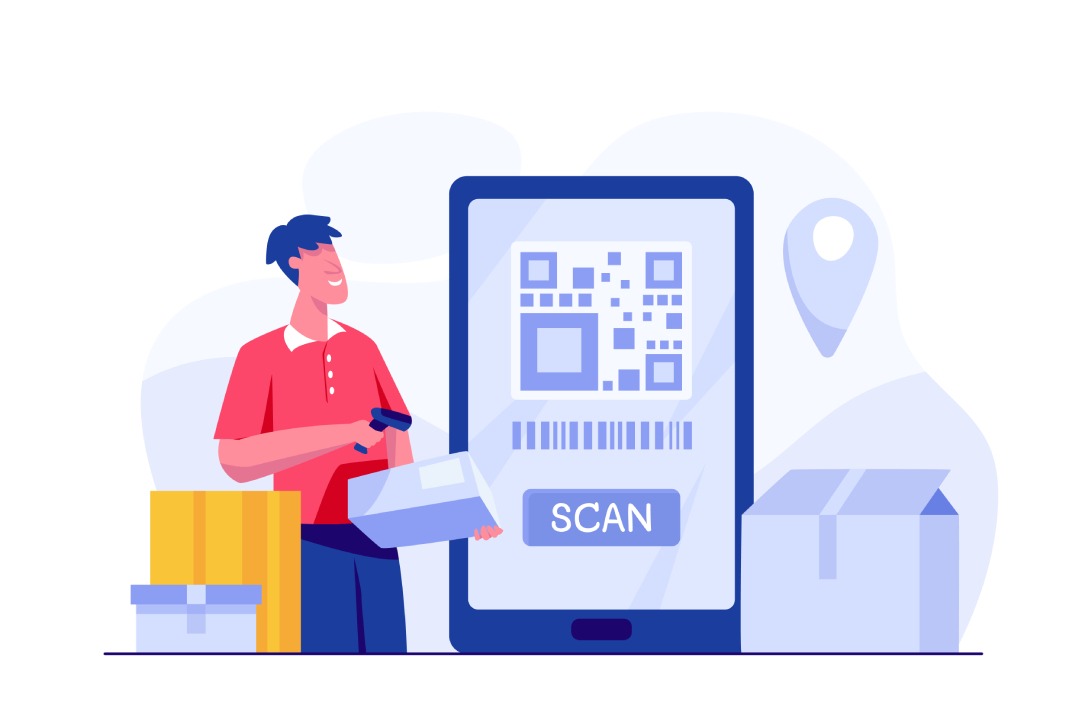A barcode scanner uses a light source, photodiode, and sensor to scan barcodes and detect changes in light intensity in between its black and white bars. Based on the barcode pattern, the scanner creates an electrical signal and sends it to a computer for conversion into readable text that works within a retailer’s database.
Here’s a breakdown of the barcode scanning process:
The barcode scanner or reader shines a light source, usually a laser or LED light, onto the barcode.
As the scanner moves sequentially across the barcode, specialized photoelectric cells generate an on-off pulse pattern that corresponds to the black and white stripes.
The built-in light sensor or photodiode in the scanner detects and records changes in the light intensity (reflected and non-reflected light) of the barcode pattern. Then, the barcode scanner translates the on-off pulse generated by the reflected light into an electrical signal that an electronic device can understand.
The digital data or binary code from the scanner is fed into a computer program, which decodes the barcode and sends it to an electronic device attached to the barcode scanner, like a computer or checkout terminal.
The electronic device converts the data to meaningful information, matching the corresponding entry in the appropriate database, local inventory system, or cloud-based server. Then, the barcode scanner retrieves and presents the encoded information on its display or sends it to a connected electronic device.
This seemingly simple process makes handling inventory tracking, management, and recordkeeping easy, while improving the customer experience.
How do handheld barcode scanners work?
Handheld barcode scanners are user-friendly devices often designed with the following parts for seamless scanning:
- 1. Standard, rugged, or antimicrobial enclosure
- 2. Trigger or button
- 3. Comfortable grip
These scanners use a point-and-scan functionality and trigger-like mechanism to activate the scanning operation and accurately capture various barcode symbologies, including 1D, 2D, postal barcodes.
The scanners use radio frequency or Bluetooth technology to integrate with devices like smartphones, tablets, laptops, or retail point-of-sale (POS) applications, and then transmit data, such as inventory updates, in real time.
How do barcode scanners work on phones?
Modern smartphones have a camera with autofocus that supports barcode or QR code scanning, and Bluetooth and wireless capabilities that allow the phone to be integrated into a barcode system. A barcode scanning app is required to scan and decode a barcode or QR code. Through an image reader, the phone decodes a barcode or QR code from a reasonable distance and displays or sends the information to a computer or other connected device. You can also sync a Bluetooth barcode scanner with your phone, allowing your device to act as a database while the scanner reads and transmits the information.
With Shopify Shopcodes, for example, once you install the free app, you can create and download unique Shopcodes for your Shopify store. When a customer scans the Shopcode, they’re directed to a product page or directly to checkout. You can also incorporate Shopcodes into your marketing by attaching discounts for customers to scan and save instantly. Shopcodes are unique and trackable, so you can see where traffic and sales come from in your Shopify Analytics dashboard.
Besides scanning barcodes and QR codes, a smartphone with barcode scanning capabilities can also perform other tasks, including:
- 1. Basic inventory tracking
- 2. Fixed asset check-in/check-out systems
- 3. Employee scheduling and dispatching
- 4. Tracking employee work hours with barcode timesheets or barcoded time tracking


